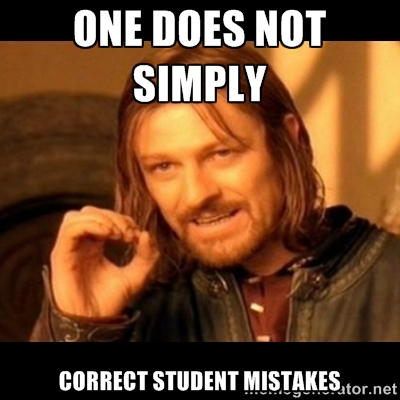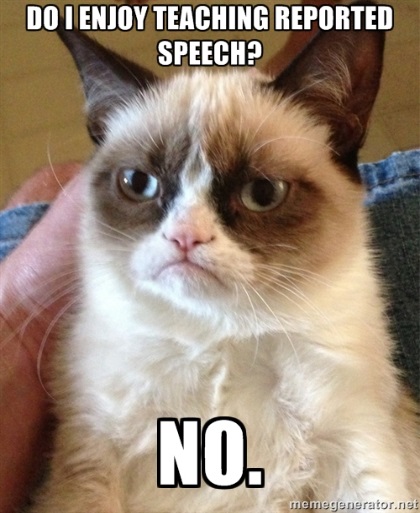Viral videos, snarky memes, and a cat that is so grumpy it puts all other crabby felines to shame, these are but a few of the pop culture elements that make millions drop what they’re doing to check out the latest craze. Why are these things so addictive? What makes them so irresistible?
What is Pop Culture?
Pop Culture is defined as the set of elements and phenomena that represent the mainstream of any given culture – “pop” is short for “popular”. Within this category, we have images, memes, videos, games and attitudes. It is often opposed to what may be called “high culture”, things like literature and classical music. Pop culture is often seen as superficial and consumerist. These days, it is the main reason people waste countless hours surfing the Internet and watching videos.
Why Use Pop Culture in the ESL Classroom?
News flash! If you teach using songs, you’re already using pop culture in your ESL classroom. And chances are you’re already using some of the other elements. But if you’re not… why should you? Aren’t your students already spending way too much time on the Internet? Here’s why you should consider adding some pop culture in your lesson plans:
- Content that is called “viral” spreads faster than the flu. It has a great deal of appeal – it’s funny, even downright hilarious sometimes. But its main feature is shareability. With just a click of a mouse you can share an image or video with all of your contacts. They, in turn, share it with theirs and so the content spreads. Your ESL students are most likely already contributing to the spread of viral content. Why not use it for educational purposes?
- Some pop culture elements have been around for decades, like pop music, famous book series and comic books. Your students’ parents were hooked on this stuff, why shouldn’t they be, too?
- Content that is viral, funny or popular never fails to engage students, especially young learners and teens.
- Your students are already updating their Facebook statuses and checking their Twitter feed nonstop…if you can’t beat ‘em, join ‘em, right?
Want to design activities that are more engaging for your ESL students? Try any of these pop culture elements, but first…
A word of advice: Some images and videos contain language that may not be appropriate for your classroom. Instead of simply going to these websites with your class, I suggest selecting the images and videos you’d like to use, or creating your own.

Try These 7 Pop Culture Elements to Engage Your Students
-
1
Gimme a Meme!
LOLcats was one of the first sites to create viral cat pictures with funny captions. Scroll down the page and one thing should stand out. Lots of the captions have hideous grammar mistakes (we can thank the “I can haz cheezburger” cat for that). They are meant to be funny but are an English teacher’s worst nightmare. So have your students correct those awful captions!
Another great activity is to have them create their own memes. Take the popular “One does not simply walk into Mordor” meme, for example. Check out what I did with MemeGenerator.

Or this one!

Again, you don’t have to use any website. Simply hand out copies of popular memes and have students add their own captions below.
-
2
YOLO…
Did you LOL when you saw the image above? ROFL! With the advent of email, chatting and texting, abbreviations starting sprouting faster than you could say OMG. Of course we want our students to write in complete sentences, but there are abbreviations they need to know, for business for example, like TBD (“to be determined”) or ASAP (“as soon as possible”). Give them a list of abbreviations to decipher. Need help? Webopedia has a pretty complete list of abbreviations and other Internet terms you might also want to teach.
-
3
Let Me Take a Selfie
Out of all the latest trends, the practice of taking “selfies”, in other words, photos of yourself, usually with your own cell phone, is the one that has been labeled the most as superficial and egotistical. But like it or not selfies have fast become a hot item in popular culture. Take for example, this famous Oscar selfie. Most people enjoy taking selfies, so why not have your students do it with a twist? Did you study the names for places around town? Give them a list and have them take selfies in front of the bank, supermarket, in a park, etc… You may name each place by its definition: This is the place where you buy fruits and vegetables.
-
4
I Challenge…
Social media challenges like the recent ALS Ice Bucket Challenge engaged millions of people. Start a similar challenge with your class. First you challenge two students, to for example, name ten farm animals in English. They must film themselves doing this and then “nominate” two other classmates for a similar challenge. They post the video to the class Facebook group and so the challenge continues. You can challenge your students to carry out any variety of tasks – sing a song or recite a poem – as long as they do it in English.
-
5
What Do You Think?
A few weeks ago, the Internet went berserk over the color of a dress. The world divided into two opposing groups, each adamant about their own position. This is the sort of thing you can take advantage of to get your class to practice specific language, like asking for and giving opinions: “I must disagree with you completely. That dress is white and gold.”
-
6
Lego Love
Legos have been around since I was a child, but now, thanks to the latest animation technologies, there is a Lego revolution. Lego toys, Lego action figures, Lego movies and even a Lego theme park. Why not bring this classic set of bricks into your ESL classroom and have your students recreate scenes, film short videos or act out role plays?
-
7
Guardians and Heroes Tweet
From Guardians of the Galaxy to Marvel superheroes and even book characters like Harry Potter and Katniss Everdeen, there are surely pop culture icons that your students admire. What would these characters tweet if they were real people? Have each student pick one character and have them write one daily tweet in the character’s voice for a month. They don’t have to create Twitter accounts for this; simply have them use a notebook or online journal.
Naturally, you won’t want to use pop culture elements every day – students might get too distracted. These are great when you need to inject a good dose of fun into your ESL class.
What about you? Have you ever used pop culture elements in your ESL class? Share in the comments below!
P.S. If you enjoyed this article, please help spread it by clicking one of those sharing buttons below. And if you are interested in more, you should follow our Facebook page where we share more about creative, non-boring ways to teach English.







